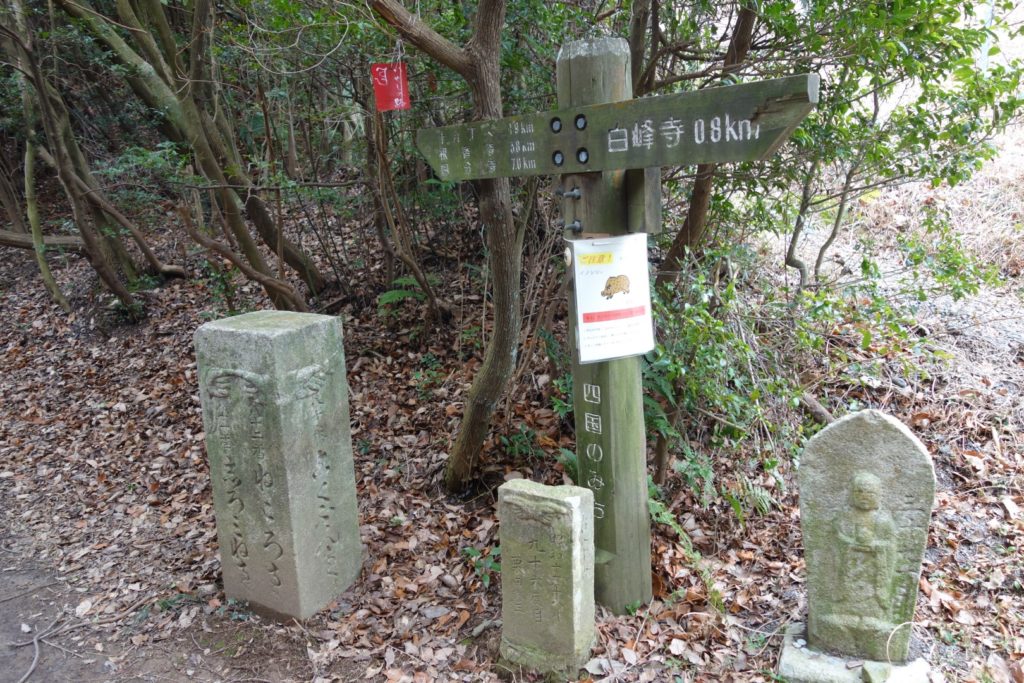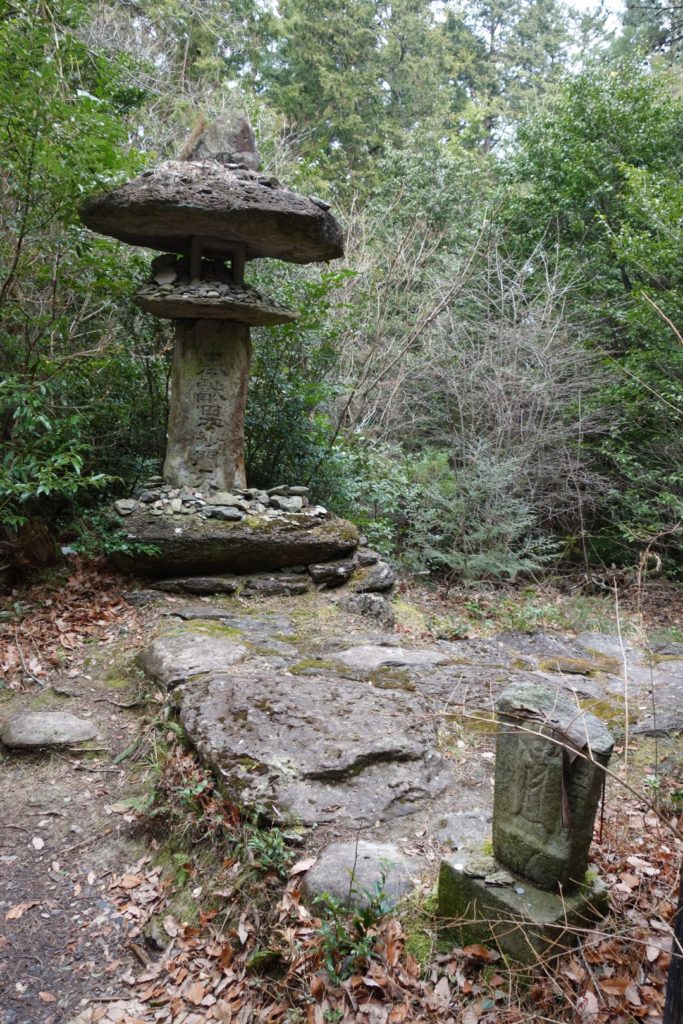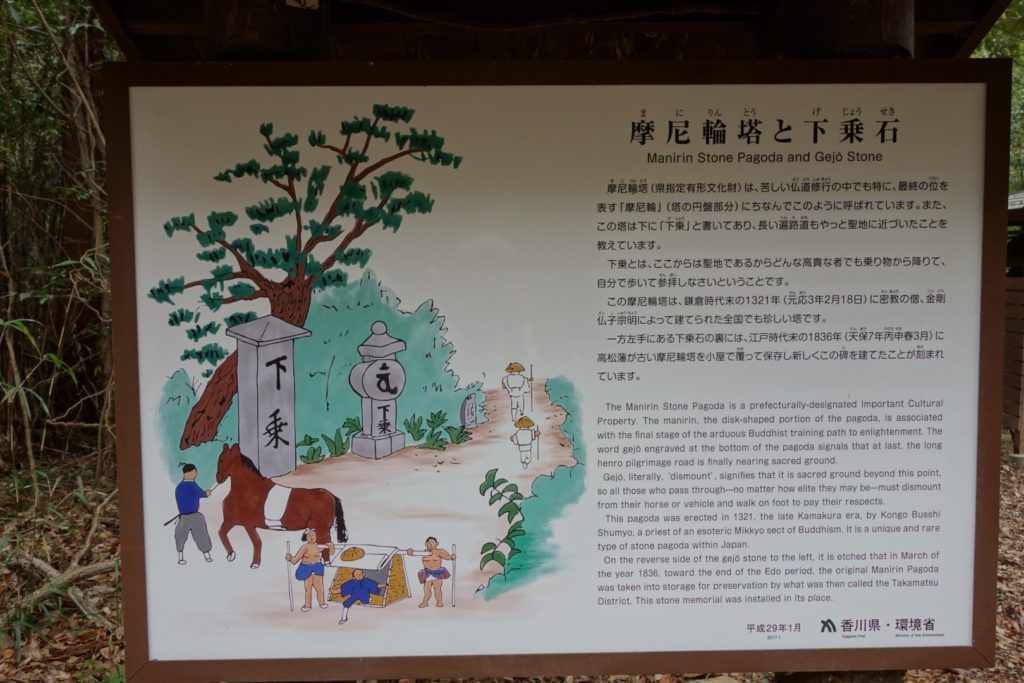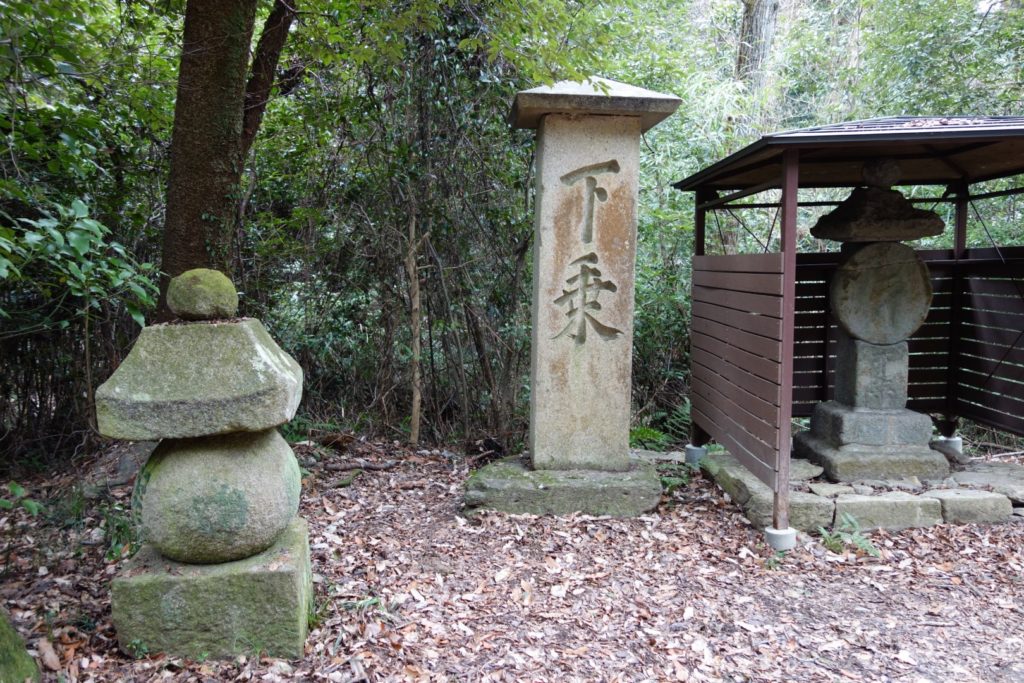
The first part of the way to Shiromine-ji was not so bad, but the last half of the way was quite a hard climb and also long distance, so it was tough. Along the route, I passed by the Self-Defense Force training grounds, and sometimes jeeps of the Self-Defense Force passed me. The mountain road was quite muddy and difficult to walk in some places, so it was a bit of a challenge.


The manirin pagoda & gejo stone are located a little before Shiromine-ji, and the explanation about this stone reminds me that I’m visiting sacred places in my pilgrimage.
The Manirin Stone Pagoda is prefecturally-designated Important Cultural Property. The manirin, the disk-shaped portion of the pagoda, is assiciated with the final stage of the arduous Buddhist training path to enlightenment. The word gejo engraved at the bottom of the pagoda signals at last, the long henro pilgrimage road is finally nearing sacred ground.
Gejo, literally, ‘dismount’, signifies that it is sacred ground beyond this point, so all thouse who pass through – no matter how elite they may be – must dismount from their horse or vehicle and walk on foot to pay their respects.
This pagoda was erected in 1321, the last Kamakura era, by Kongo Busshi Shumyo, a priest of an esoteric Mikkyo sect of Buddhism. It is a unique and rare type of stone pagoda within Japan.
On the reverse side of the gejo stone to the left, it is etched that in March of the year 1836, toward the end of the Edo period, the original Manirin Pagoda was taken into storage for preservation by what was then called the Takamatsu District. This stone memorial was installed in its place.
2017.1, Kagawa Pref. Ministry of the Environment

Recent Comments